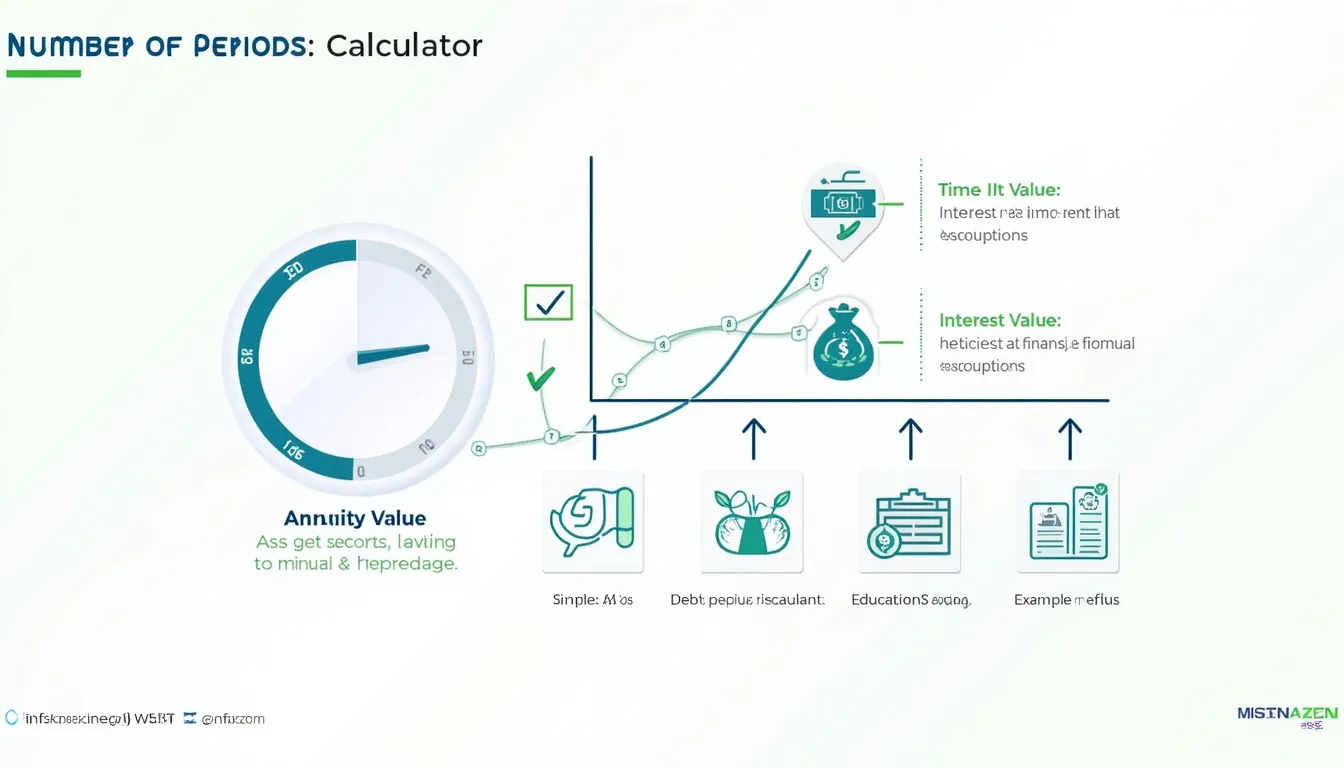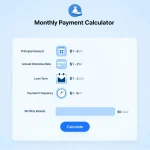Number of Periods Calculator
Is this tool helpful?
How to use the tool
- Present Value of Annuity – type the current lump-sum goal or loan balance. Examples: 60 000; 200 000.
- Rate per Period (%) – enter the periodic interest rate, not annual. Examples: 0.4; 1.0.
- Payment – supply the fixed amount deposited or repaid each period. Examples: 800; 2 500.
- Calculate – press the button to see the number of periods required.
Underlying formula
The calculator solves for n with the logarithmic present-value equality:
$$ n = rac{\log\!\left(1 – rac{PV \times r}{PMT}\right)}{-\log(1 + r)} $$
- PV – present value
- r – rate per period (decimal)
- PMT – payment
Example 1
- PV = 60 000
- r = 0.5 % = 0.005
- PMT = 1 000
You need about 71.6 periods.
Example 2
- PV = 200 000
- r = 1 % = 0.01
- PMT = 3 000
Result: roughly 110.4 periods.
Quick-Facts
- Typical U.S. personal-loan rates run 4 %-12 % APR (Bankrate, 2024).
- PV formulas assume payments at period end, the ordinary-annuity convention (CFP Board, 2022).
- Mortgage servicers use the same logarithmic model to quote payoff dates (Consumer Finance Protection Bureau, 2023).
- Excel’s NPER function mirrors the calculator’s equation (Microsoft Docs, 2023).
FAQ
What is the present value of an annuity?
The present value equals the lump sum that would replace a stream of equal future payments discounted at a given rate (Investopedia, 2023).
Why does a higher rate reduce the period count?
Each payment earns more interest, so fewer deposits are needed to reach the same present value (Federal Reserve Education, 2022).
How do I convert monthly periods to years?
Divide the calculator output by 12; 60 periods equals 5 years (SEC Investor Bulletin, 2021).
Can I use annual rates directly?
Yes—first convert to the period rate: annual ÷ 12 for monthly or ÷ 4 for quarterly (FINRA, 2023).
Does the tool handle payments at the beginning of periods?
No; it assumes ordinary annuities. Multiply the result by rac{1}{1+r} to approximate an annuity-due schedule (Bodie et al., 2021).
Why do I get an error when PMT ≤ PV × r?
The logarithm becomes undefined because payments are too small to cover interest, so the present value never declines (Pearson Finance Math, 2020).
Is the calculation tax-adjusted?
No; taxes vary by account type and jurisdiction. Apply your effective after-tax rate for more realistic planning (IRS Pub 590-A, 2024).
How accurate is the formula with variable rates?
Accuracy drops when rates change; recompute whenever the rate shifts to keep projections current (Federal Reserve FOMC minutes, 2023).
Important Disclaimer
The calculations, results, and content provided by our tools are not guaranteed to be accurate, complete, or reliable. Users are responsible for verifying and interpreting the results. Our content and tools may contain errors, biases, or inconsistencies. Do not enter personal data, sensitive information, or personally identifiable information in our web forms or tools. Such data entry violates our terms of service and may result in unauthorized disclosure to third parties. We reserve the right to save inputs and outputs from our tools for the purposes of error debugging, bias identification, and performance improvement. External companies providing AI models used in our tools may also save and process data in accordance with their own policies. By using our tools, you consent to this data collection and processing. We reserve the right to limit the usage of our tools based on current usability factors.







